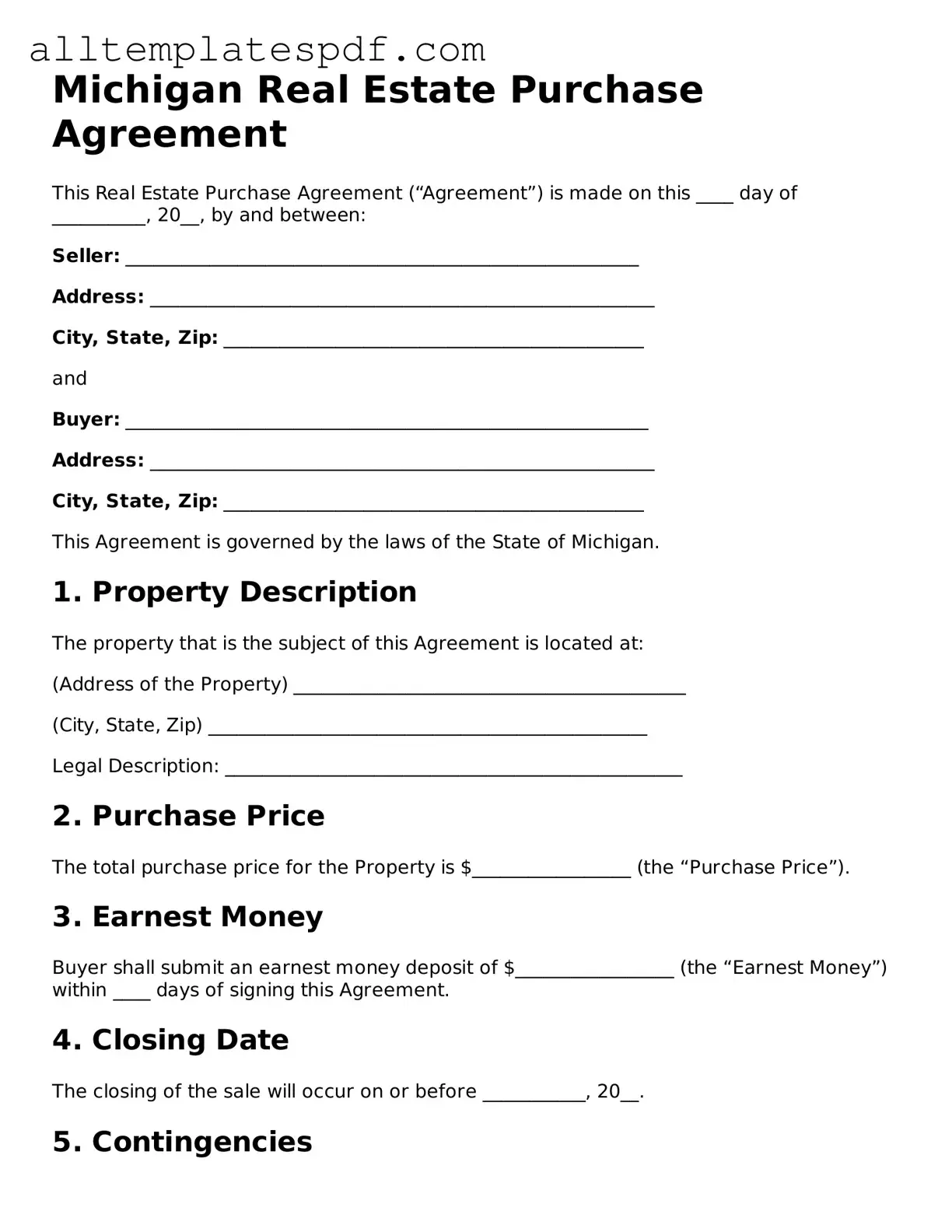Filling out the Michigan Real Estate Purchase Agreement can be a daunting task. Many individuals make common mistakes that can lead to confusion or complications later on. One frequent error is failing to provide accurate property details. Buyers and sellers must ensure that the address, legal description, and parcel number are correct. Missing or incorrect information can cause delays in the transaction.
Another mistake is neglecting to specify the purchase price clearly. The amount should be written in both numerical and written form to avoid misunderstandings. If only one form is provided, it can lead to disputes over the intended price.
People often forget to include important contingencies. These are conditions that must be met for the sale to proceed. Common contingencies include financing, home inspections, and appraisal requirements. Omitting these can leave buyers vulnerable if issues arise.
Additionally, many individuals overlook the need for signatures. All parties involved must sign the agreement for it to be legally binding. A lack of signatures can render the agreement void, which can be frustrating for everyone involved.
Misunderstanding the earnest money deposit is another common pitfall. Buyers should be clear about how much they are putting down and when it is due. This deposit shows commitment and can be forfeited if the buyer backs out without a valid reason.
Some people fail to review the closing date. It is essential to agree on a timeline that works for all parties. A vague or unrealistic closing date can create unnecessary stress and complications.
Another frequent oversight is not disclosing necessary information about the property. Sellers must provide full disclosure regarding any known issues or defects. Failing to do so can lead to legal consequences down the line.
Buyers sometimes neglect to include their financing terms. It is important to outline how the purchase will be funded, whether through cash, a mortgage, or other means. This clarity helps all parties understand the financial aspects of the agreement.
Lastly, individuals may not seek legal advice when needed. Consulting with a real estate attorney can provide guidance and ensure that the agreement is filled out correctly. This step can prevent costly mistakes and protect everyone's interests.
